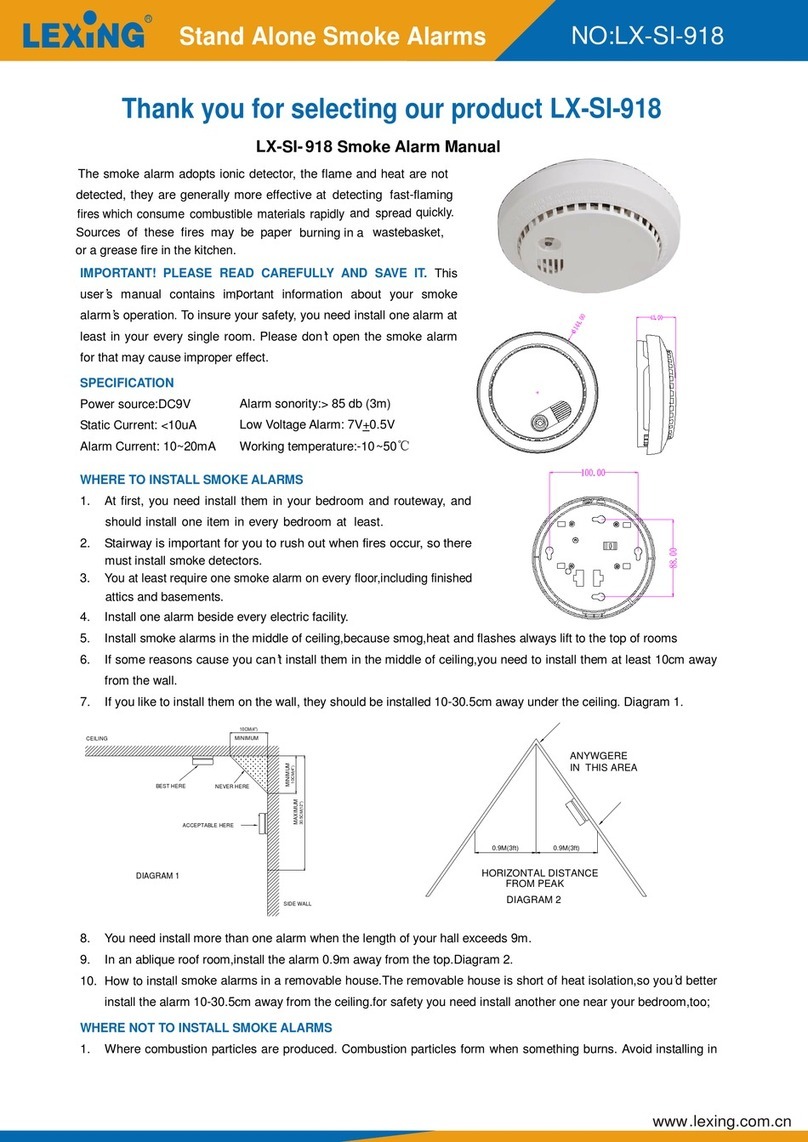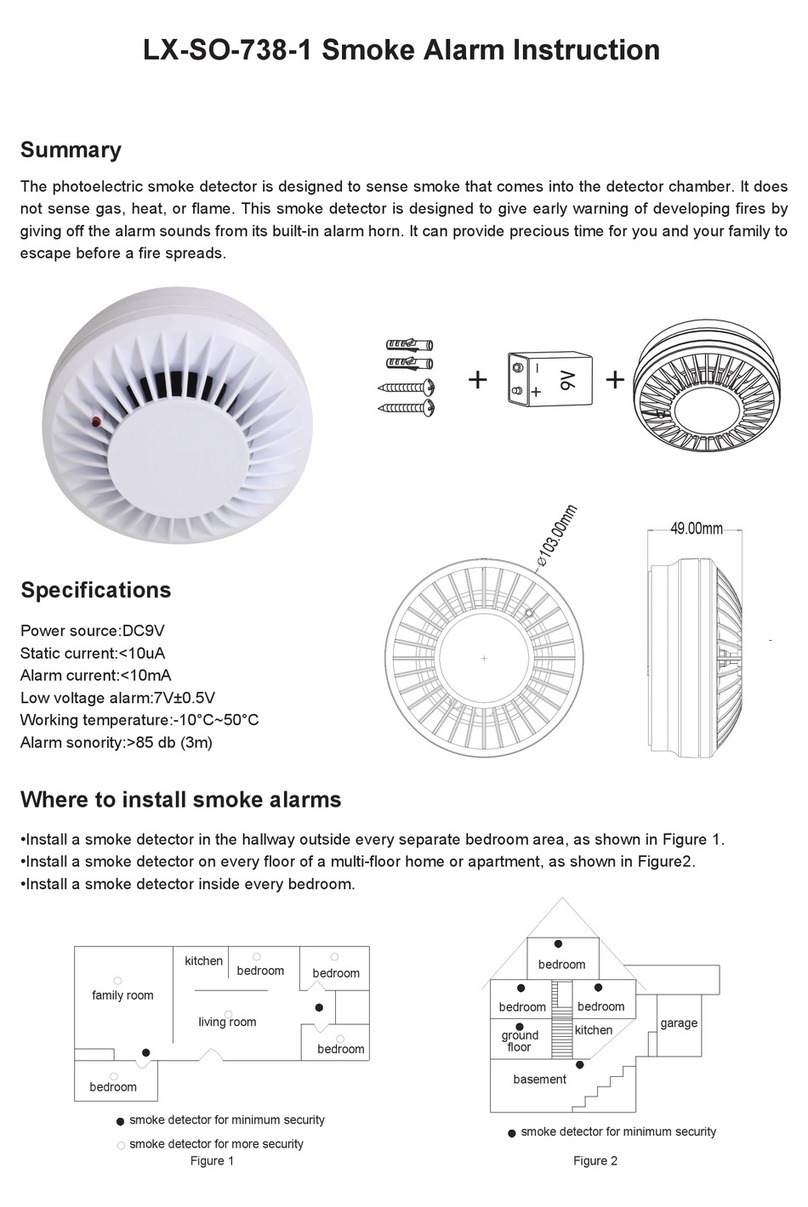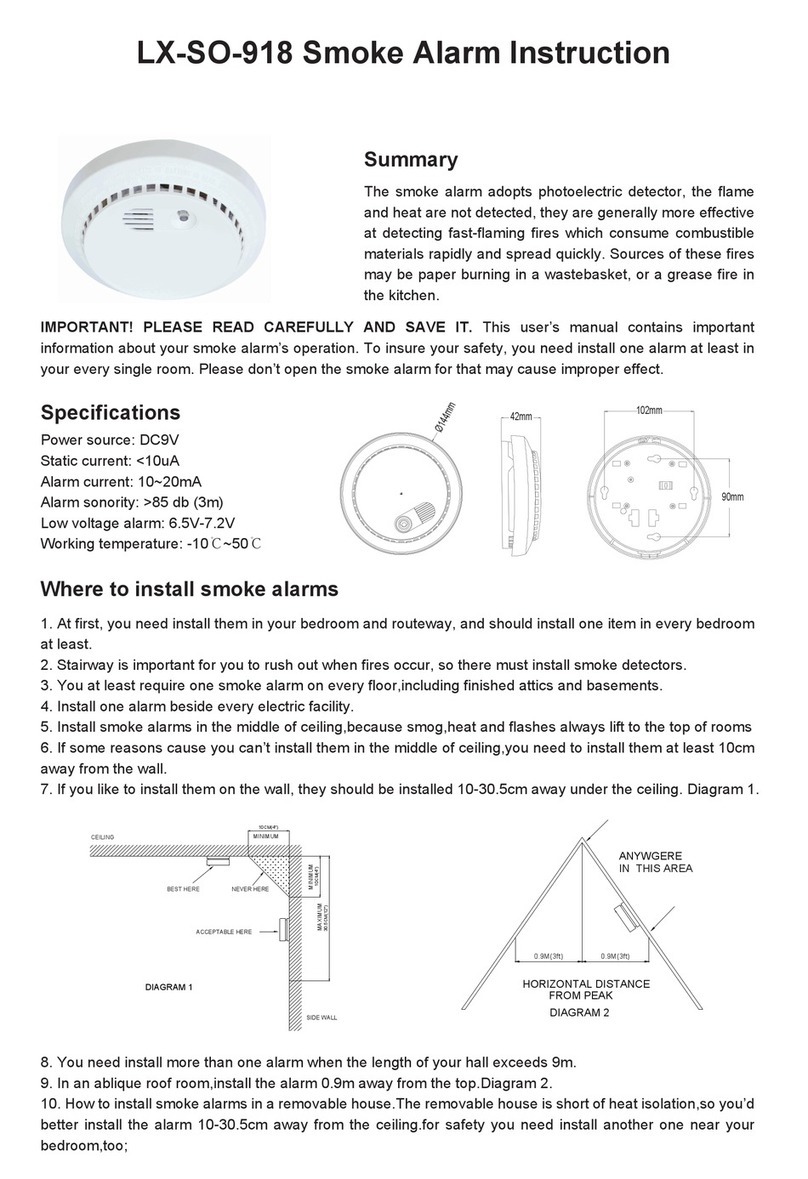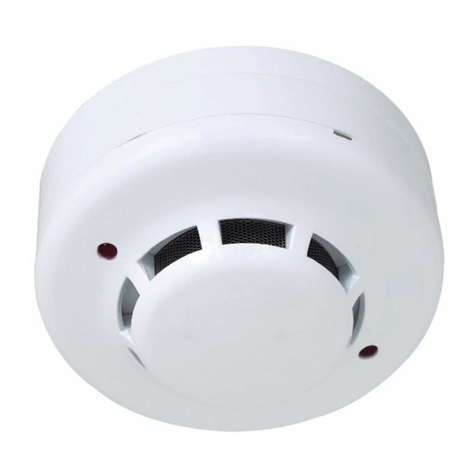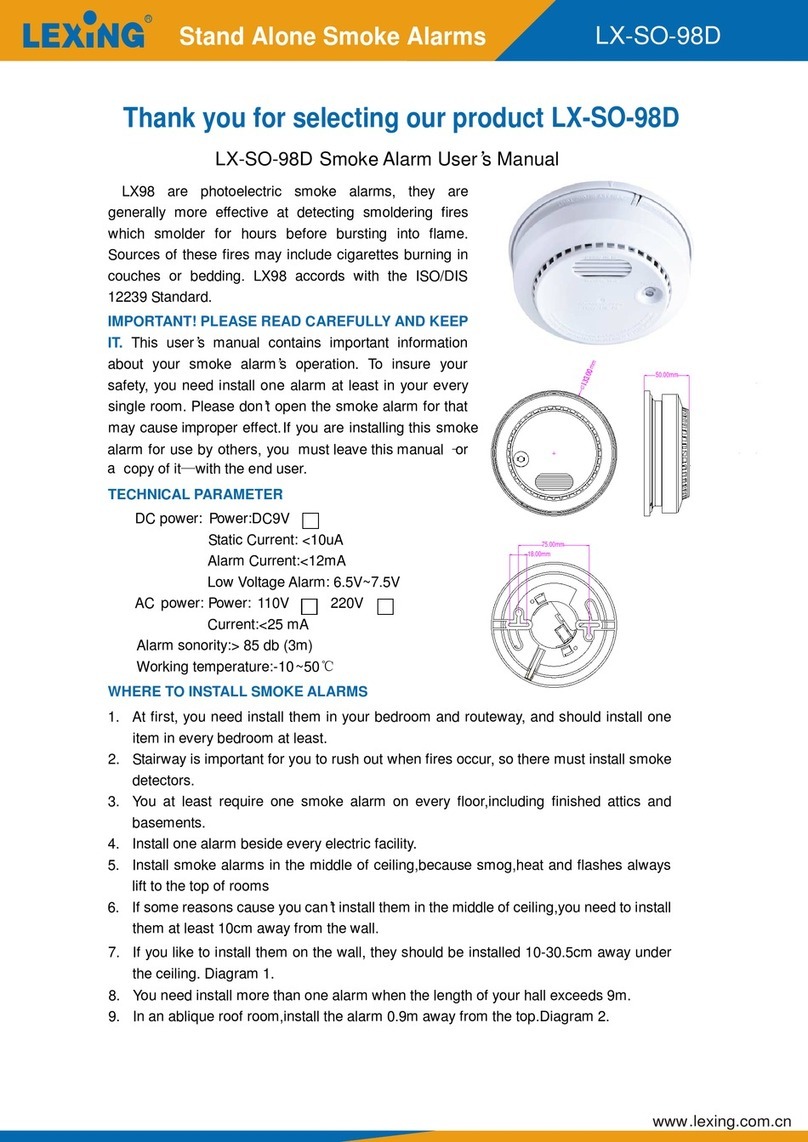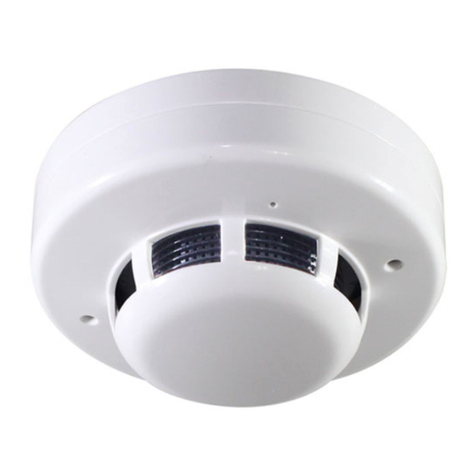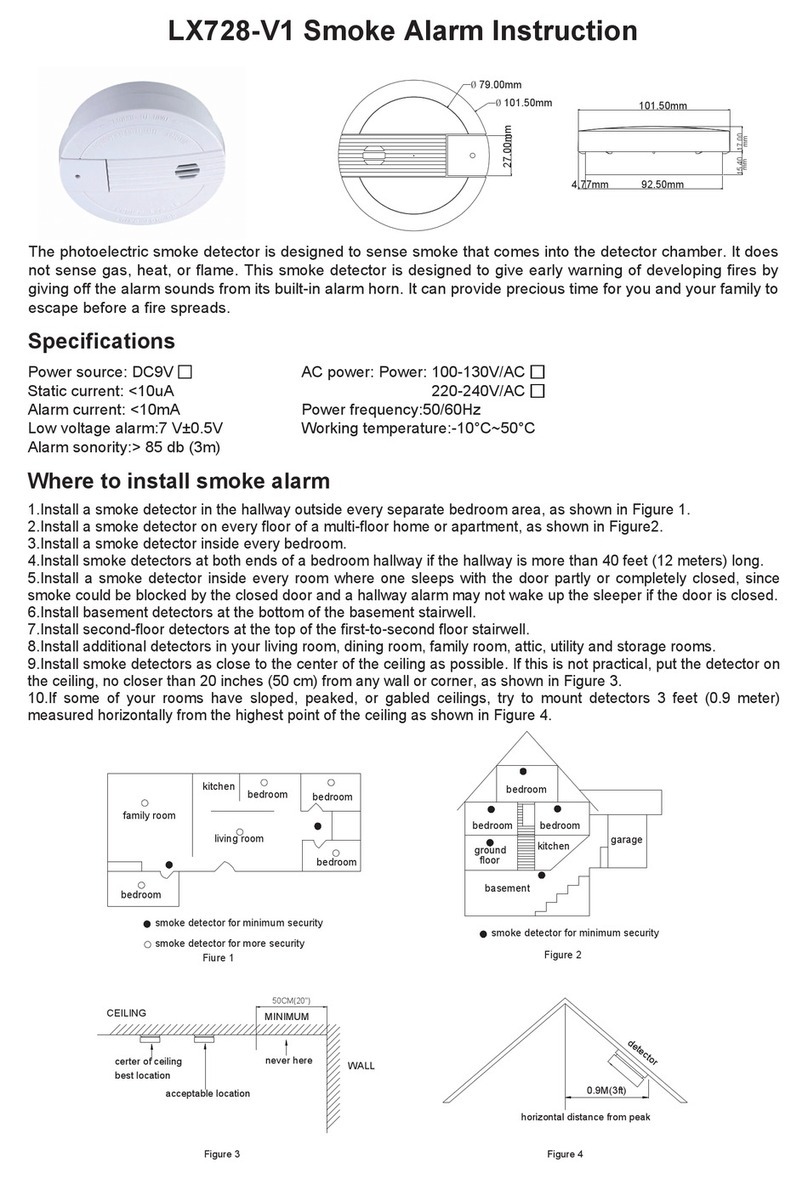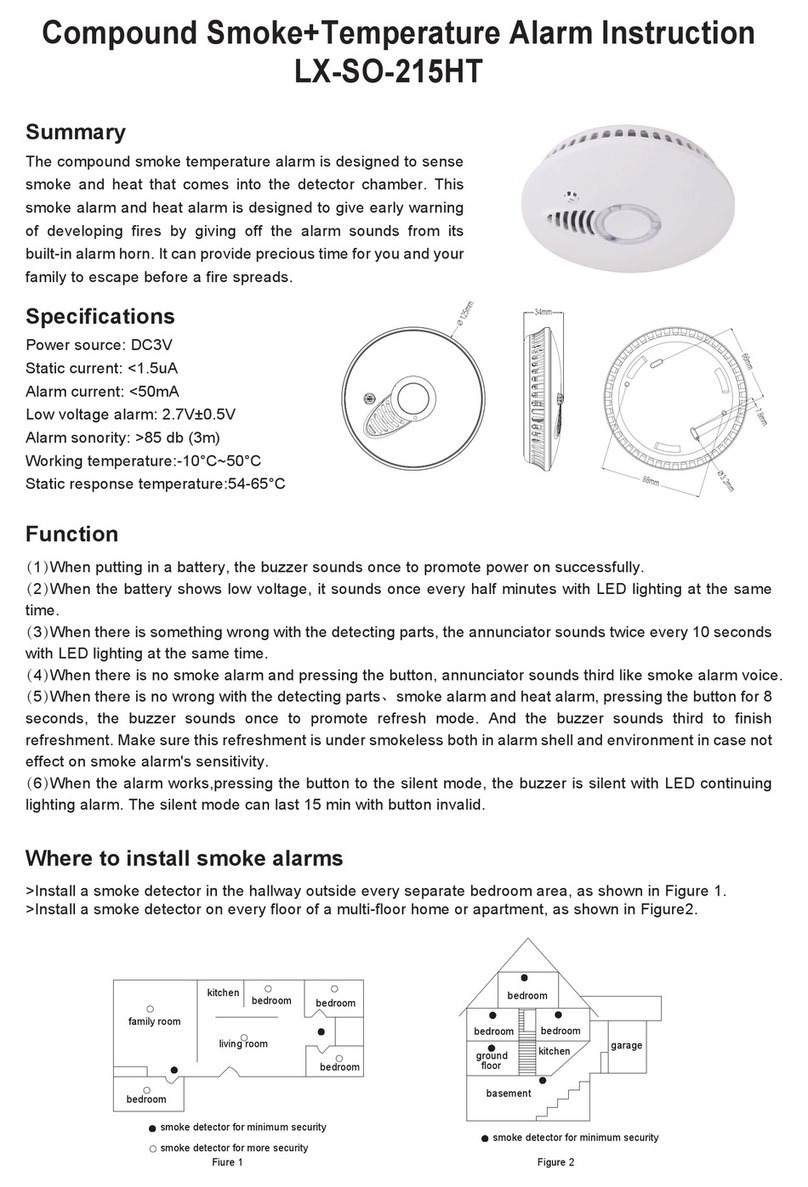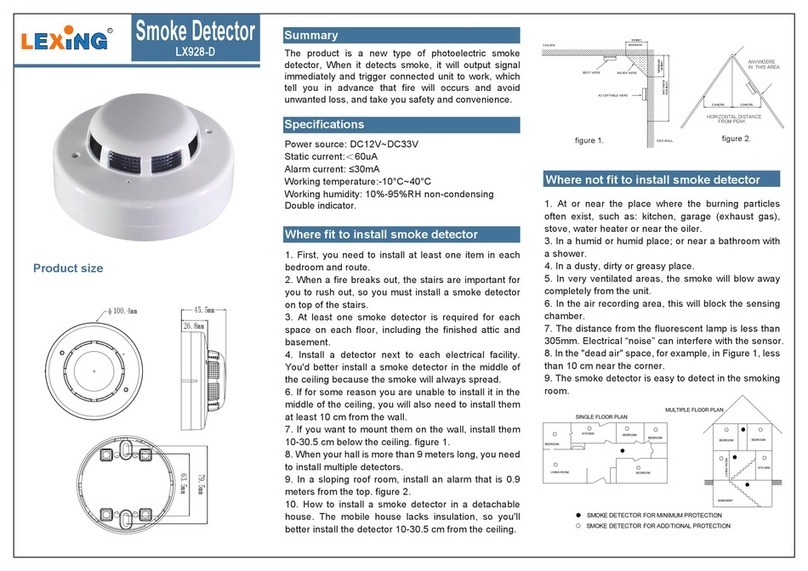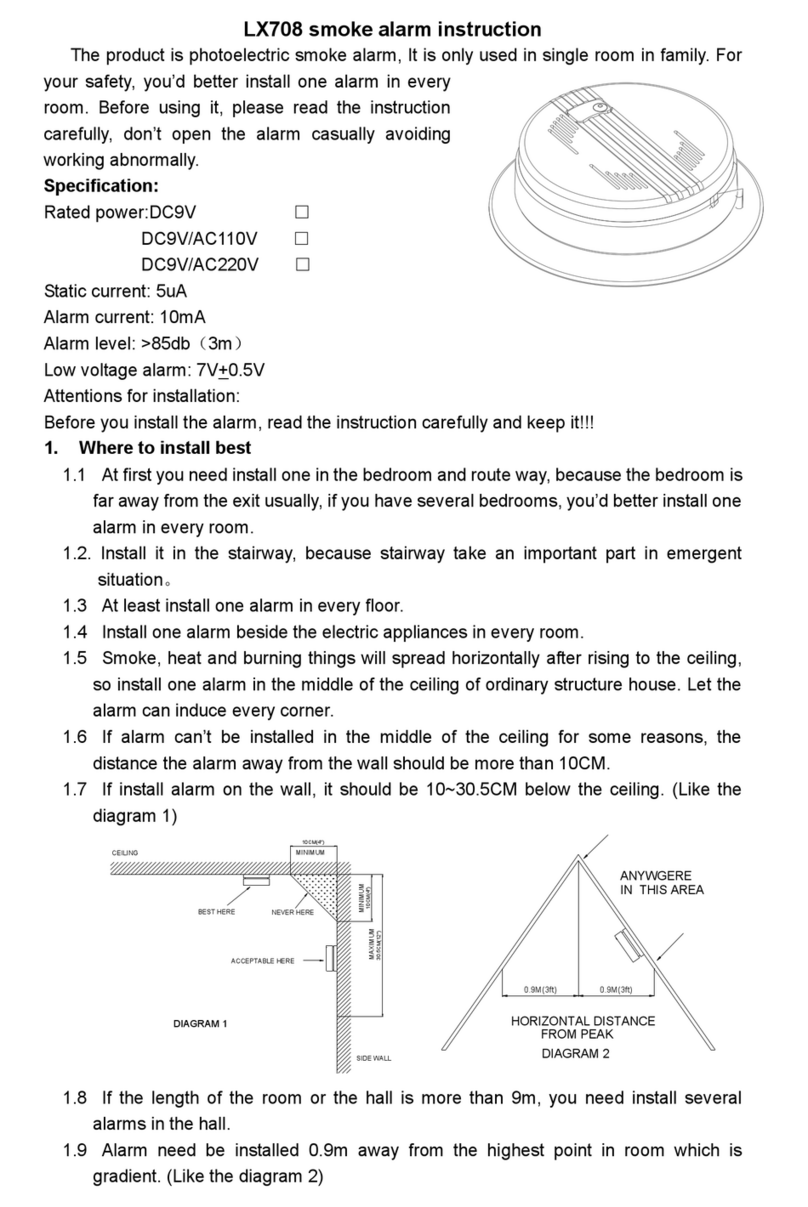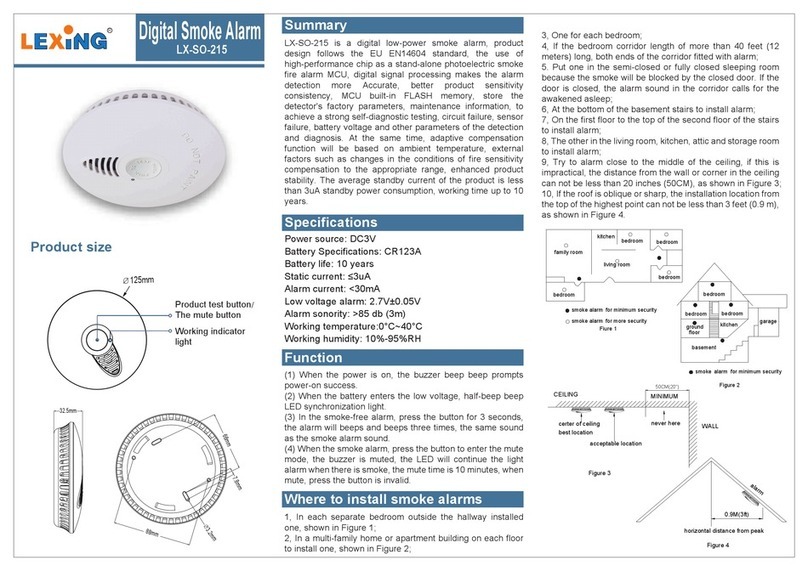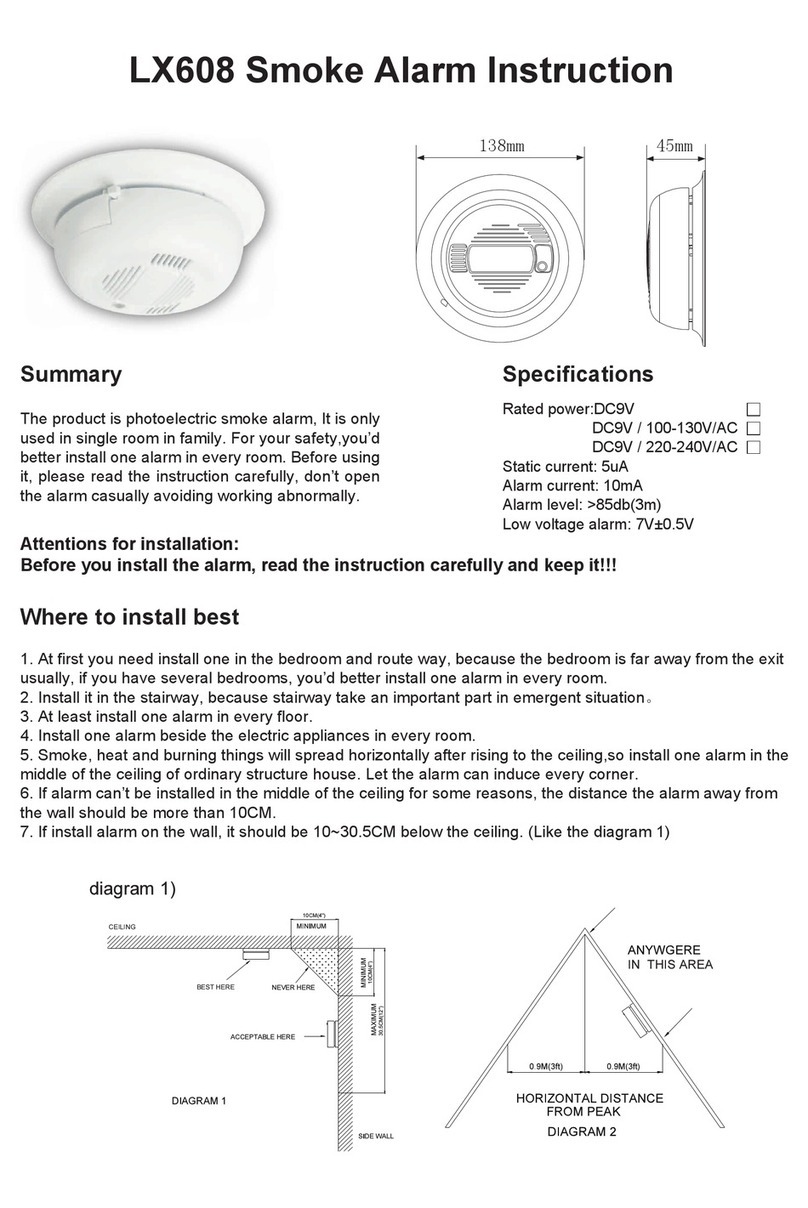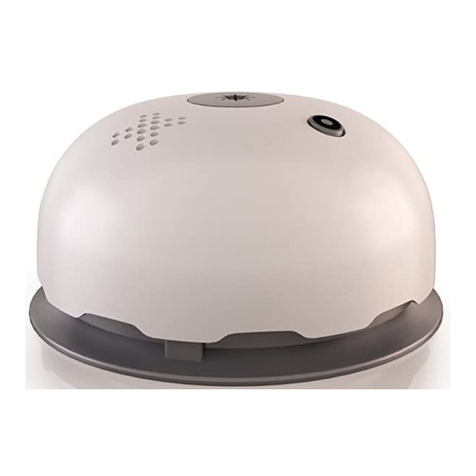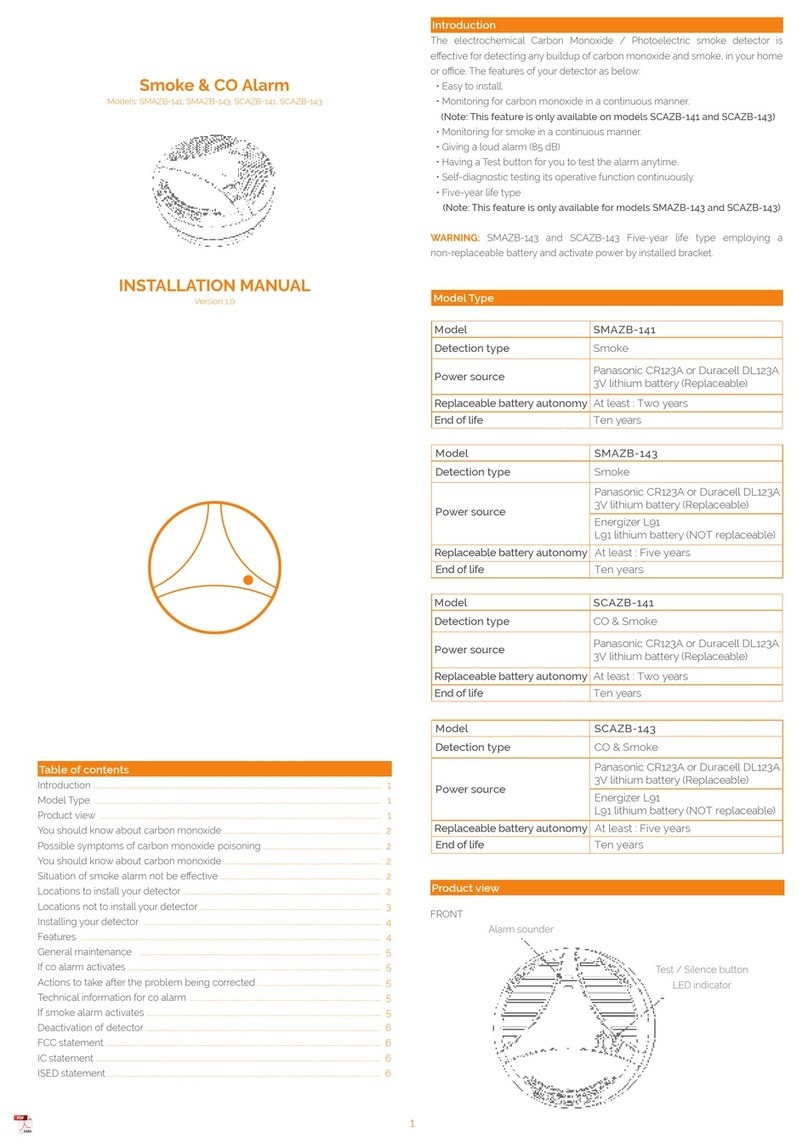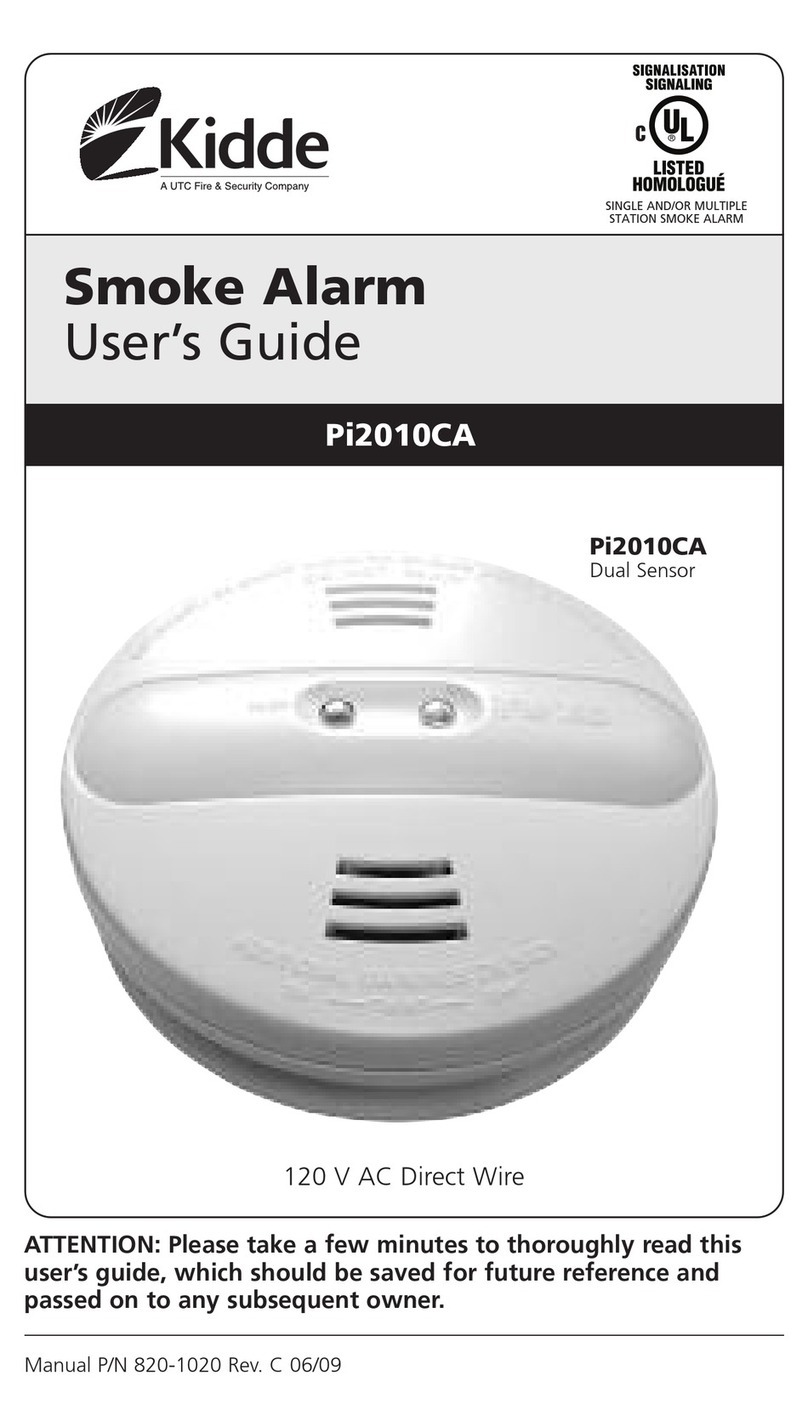
3. Remove the bottom cover.
4. Using an electric drill with a 6.5mm drill bit, bore two holes on the
pencil mark, put the unit away from getting plaster dust on it when you
drill holes for mounting.
5. Tap the plastic dilatants into the holes with hammer and then strike
the 3*30 screws into the dilatants; and tighten the screws to fix the
bottom cover.
6. Insert 3v cascading battery into battery box, if you don’t do that, you
cannot fix the alarm body on the bottom cover.
7. Make the hole on the middle cover aligned with the lock button on
the bottom cover and turn the alarm body clockwise.
NOTE: When the alarm battery first makes contact with the alarm,
the alarm horn may sound for one second. This means normal
and indicates that the battery is positioned properly. Close
cover, then press the test button, holding it down for about 5
seconds until the horn sounds. The horn should sound a loud,
pulsating alarm. This means the unit is working properly.
Installing your smoke alarm
The smoke alarm are to be mounted on the ceiling. Please follow these steps to install your smoke alarm:
1. Hold the bottom cover firmly and then turn the body anti-clockwise to release the bottom cover down.
2. Hold the bottom cover on the selected installing position, make hole mark with pencil at the center of the
installing slot/hole on the bottom cover.
WARNING: Never remove batteries to stop a nuisance alarm. Open a window or fan the air around the alarm
to get rid of the smoke. The alarm will turn itself off when the smoke is gone. If nuisance alarms persist,
attempt to clean the alarm as described in this User’s Manual.
WARNING: Do not stand close to the alarm when the alarm is sounding. The alarm is loud in order to wake
you in an emergency. Too much exposure to the horn at close range may be harmful to your hearing.
> Dead air spaces are often at the top of a peaked roof, or in the corners between ceilings and walls. Dead
air may prevent smoke from reaching a detector.
> In insect-infested areas. If insects enter a alarm’s sensing chamber, they may cause a nuisance alarm.
Where bugs are a problem, get rid of them before putting up a detector.
> Near fluorescent lights, electrical “noise” from fluorescent lights may cause nuisance alarms. Install smoke
alarm at least 5 feet (1.5 meters) from such lights.
Red indicator
The red LED, as the ALARM indicator, is featured with the detector. It can be seen through the test button
on the cover of the alarm. When red LED flashes once 35 seconds, it indicates the alarm under normal
operation. When smoke alarm senses smoke and simultaneously sounds an audible alarm, the red LED will
flash very frequently, once 0.5 seconds.
Testing your smoke alarm
Test the alarm weekly by pushing firmly on the test button with your finger until the horn sounds. Testing
method may take up to 20 seconds to sound the alarm horn. These are only ways to be sure that alarm is
working correctly. If the alarm fails to test properly, have it repaired or replaced immediately.


